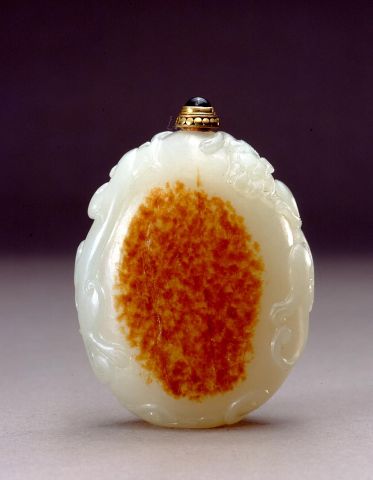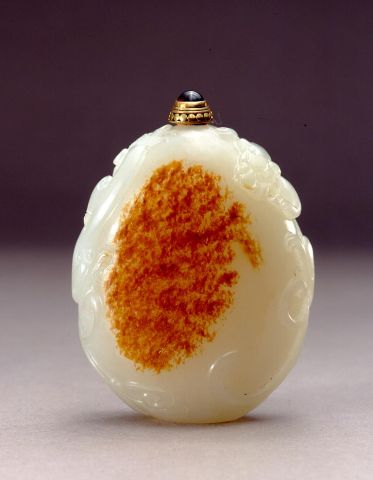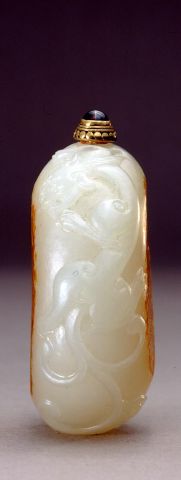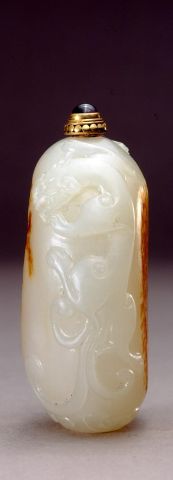



Bottle ID: 229
PEBBLE WITH BROWN SKIN, CHI DRAGON
Date: 1740-1840
Height: 60 mm
Nephrite, very well hollowed, of natural pebble form, the white stone with a patch of rich brown skin remaining on the main sides, carved in relief on the narrow sides with coiling Chi dragons.
Similar Examples:
Crane Collection nos. 149, 320, 455 and 516
Crane Collection no. 422
Sotheby's, New York, March 17, 1997, lot 15, The Dodge Collection.
Provenance:
Hugh Moss [HK] Ltd.
Exhibited:
Annual Convention ICSBS New York, November 2013
Published:
JICSBS, Autumn 2013, Front Cover
Until the 16th century nephrite was found in the form of pebbles or boulders in the Western Kunlun mountain range. It came down by river to Khotan, an oasis town in the Taklaman desert. After centuries of taking nephrite from the river bed, workers began to mine at source to meet the popular demand for the stone. At the time Chinese connoisseurs considered mined nephrite to be inferior to the river bed type. The flow of water created various effects on the stone resulting in smooth pebbles with stained russet- brown exteriors which were subsequently utilized in the creation of works of art. In snuff bottles this unveiled itself through the use of small, sometimes whole pebbles thinly hollowed yet retaining the outer skin as an integral part of the design. During the 17th - 19th centuries nephrite became increasingly popular. Between the conquest of Turkestan in 1760 and the insurrections of 1812 China received from the jade-producing regions 2,000 kilos of nephrite in the Spring and Autumn of each year. The flow of jade diminished after 1812 but was not completely cut off until 1862.
< Back to full list
 English
English 中文
中文